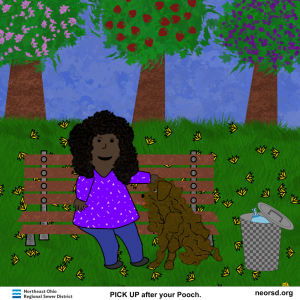Congress’s recent ruling against affirmative action in college admissions creates additional challenges for marginalized groups such as women and the LGBTQ community. Factors such as age, race, location, and income level can impact educational opportunities. Although college admissions are based on your high school grades, extracurricular activities, and recommendations, certain groups fall through the cracks of the system. Women and the LGBTQ community will continue to be underrepresented in certain fields. The economically disadvantaged will struggle to secure funding due to the elimination of need-based affirmative action programs.
Getting the federal aid forms accepted can be an arduous task for members of the LGBTQ community. Problems with their names and gender not matching can cause their applications to become delayed or canceled. LGBTQ youths may require information from their parents to get accepted for aid. Not all members of the LGBTQ community have accommodating families.
Stereotypical roles of masculinity promote inappropriate behaviors. Younger women, females living in poverty, and LGBTQ groups have greater incidents of sexual harassment. Women in poverty are twelve times more likely to be sexually harassed. According to an Australian study conducted in 2018: thirty-three percent of LGBTQ students have experienced harassment., thirteen percent have faced online bullying, six percent have received threats, and thirty-eight percent have suffered physical harm. (Ferfolia 933-947)

Toxic masculinity creates a hostile environment for females and the LGBTQ group. Female college students in Africa feel uncomfortable in certain places on campus. They worry about being coerced into casual sex and their drinks being spiked. Women and LGBTQ students fear being attacked on public transportation. (Nagabaza)
Marginalized groups such as females and the LGBTQ community are forced to put on a façade due to outdated notions of gender- roles, intolerance by religious institutions, and cultural norms. They feel alienated and hide their true selves for fear of being victimized. For example, members of the LGBTQ community are in danger of being reprimanded or expelled from religious-based colleges. For example, Matthew Grierson got kicked out of college at Brigham Young for holding his boyfriend’s hand in public. Shows of public affection for same-sex couples are grounds for suspension. Religious schools are protected by the first amendment, which allows them to discriminate based on “religious beliefs.” The only way these students are able to become readmitted is to convince the school that they no longer have homosexual tendencies. (Mardesich 26-31).
According to the Princeton Review, some of the universities that are least welcoming to the LGBTQ community include Brigham Young, Notre Dame, Bucknell, Baylor, Wheaton, and Auburn. Countries such as Ethiopia expect women to stay within the domestic “sphere.” Females have very little decision-making power. Women are considered incompetent, and academics is considered a masculine pursuit. Females only account for 9.5 percent of college admissions and have limited career opportunities. (Molla 759-795)
According to the national average across the United States, scholarships for women are less than that of male recipients. For example, female athletes receive $1,000 less than males. Men received $20,275 in skiing scholarships, while women only obtained $19,084. The 2023 lacrosse scholarships were awarded to 13 men and only 12 women. Twelve water polo scholarships were awarded to males, and eight were given to females. Many female scholarships have been canceled or are under review due to men filing discrimination complaints. These outdated cultural norms promote toxic masculinity. This continues to be a universal problem. Women and the LGBTQ community are expected to perform poorly in areas such as the humanities, science, history, business, science, law, and engineering.
Twenty percent of engineering graduates are women. Thirty percent of history graduates are female. Despite the humanities being a male-dominated subject, over sixty percent of female graduates have earned a degree in this field. These unconscious biases and aggressive displays of masculinity have lasting consequences for females and the LGBTQ community.
Victims may develop a sense of powerlessness, post-traumatic stress, increased alcohol use, poor job performance, decreased self-esteem, urge to hide their sexuality, suicide attempts, and feelings of abnormality. Twenty-seven percent of women and LGBTQ members have experienced depression. Forty-seven percent have experienced anxiety. Nine percent have significant drops in grades and attendance.
Biases and stereotypes promote discrimination. Discrimination is a universal problem. Everybody deserves to have an equal chance at success. This will be an ongoing challenge until people develop different mindsets, become more tolerant, and devise a system to allocate resources equally. Offering more opportunities to marginalized groups will help us become a more peaceful and integrated society.
Read more article on Higher Education on the Zealousness blog Higher Education: College & University – iN Education Inc. (ineducationonline.org).
Works Cited
- Ferfolja, Tania, et al. “In/Visibility on Campus? Gender and Sexuality Diversity in Tertiary Institutions.” Higher Education (00181560) 80, no. 5 (November 2020): 933–947.
- Heffernan, Troy. “Abusive Comments in Student Evaluations of Courses and Teaching: The Attacks Women and Marginalised Academics Endure.” Higher Education (00181560) 85, no. 1 (January 2023): 225–239.
- Mardesich, Jodi. “Pass or fail.” Advocate, no. 847 (25 September 2001): 26–31.
- Molla, Tebeje, and Denise Cuthbert. “Qualitative Inequality: Experiences of Women in Ethiopian Higher Education.” Gender & Education 26, no. 7 (December 2014): 759–775.
- Nagabaza, S., and T. Shefer. “Students Narrative on Gender and Sexuality in The Project of Social Justice and Belonging in Higher Education.” South African Journal of Higher Education 32, no. 3. (July 2018)























